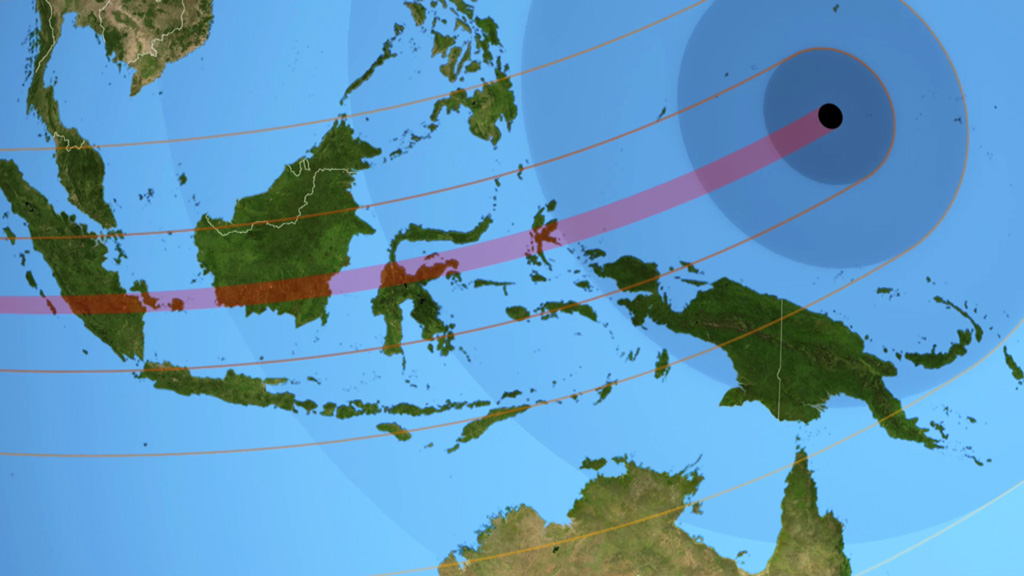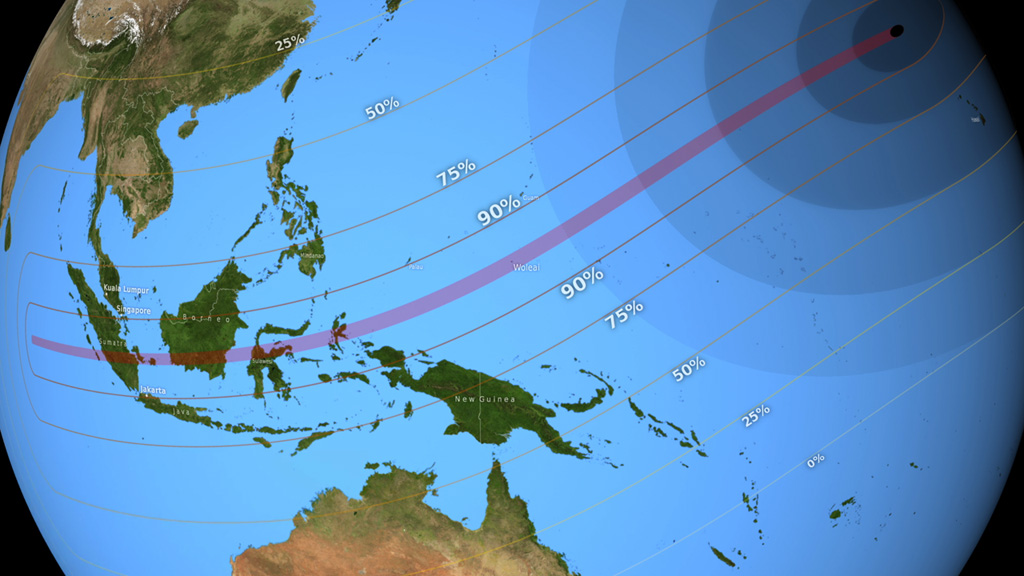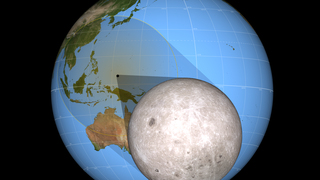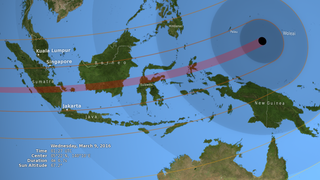Sun
ID: 12170

On March 8, 2016 (March 9 local time), people in parts of Southeast Asia will have the chance to see a total solar eclipse. A total solar eclipse occurs when the moon passes precisely between Earth and the sun, casting a shadow on part of the Earth’s surface. Such events are a relatively rare occurrence that happens only about once a year because of the fact that the moon and the sun do not orbit in the exact same plane. Skywatchers along the path of the eclipse—which is over 8,800 miles long, but only 97 miles wide at the widest point—will see the moon black out the sun’s bright disk for between one and a half to just over four minutes depending on their location. Some degree of a partial solar eclipse will be visible to people outside this path in Asia and the Pacific, including Hawaii, Guam and parts of Alaska. Watch the video to see an animation that shows the movement of the moon's shadow during the event.



Total Solar Eclipse




Source Material
For More Information
Story Credits
Lead Visualizer/Animator:
Ernie Wright (USRA)
Visualizer/Animator:
Walt Feimer (HTSI)
Producer:
Genna Duberstein (USRA)
Writers:
Sarah Frazier (ADNET Systems, Inc.)
Ernie Wright (USRA)
Lead Writer:
NASA Viz Team
Ernie Wright (USRA)
Visualizer/Animator:
Walt Feimer (HTSI)
Producer:
Genna Duberstein (USRA)
Writers:
Sarah Frazier (ADNET Systems, Inc.)
Ernie Wright (USRA)
Lead Writer:
NASA Viz Team
Please give credit for this item to:
NASA's Goddard Space Flight Center
Cover image courtesy of NASA/GSFC/CI Lab
NASA's Goddard Space Flight Center
Cover image courtesy of NASA/GSFC/CI Lab
Short URL to share this page:
https://svs.gsfc.nasa.gov/12170
Keywords:
NASA Science >> Sun
SVS >> App
https://svs.gsfc.nasa.gov/12170
Keywords:
NASA Science >> Sun
SVS >> App









